New math: Fail + try again = real learning
Teachers increasingly urge students to risk failing as a route to ultimate success
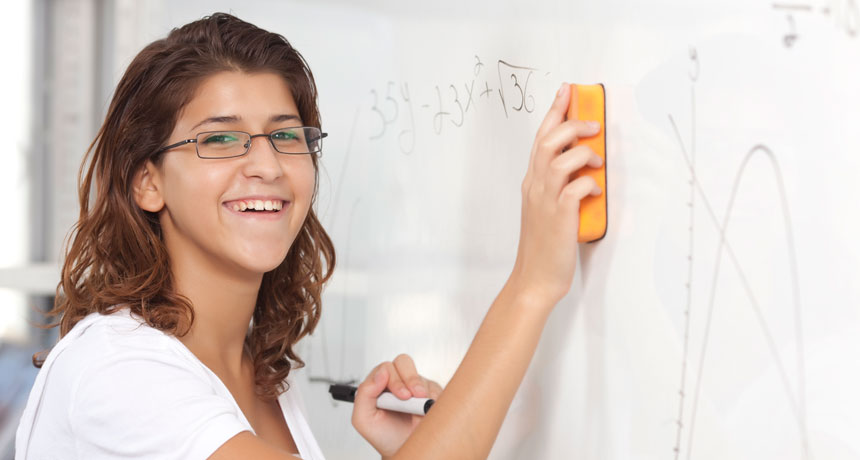
We learn from our mistakes: As old as the expression may be, new research backs it up. When students learn through trial and error, they also develop an appreciation for how failure often leads inadvertently to new discoveries and inventions.
RUSLANDASHINSKY/ iStockphoto
By Susan Moran
Last year, I took an improvisational comedy class in a successful attempt to stretch my comfort zone and to have fun. One of the first things our teacher, Myles Goldin, told us to do whenever anyone made a mistake during an exercise was to throw our hands high in the air and yell, “Wahoo!” Within a couple of minutes of starting our first game — essentially, speed-catch with several invisible balls of different colors — some student failed to catch the virtual blue ball. Suddenly, Goldin was leading us in a round of yelling “Wahoo!” This happened over and over each class.
Goldin was reinforcing a central message: Mistakes are not only okay, they’re necessary building blocks of learning and creativity. “We should embrace and celebrate mistakes, because we couldn’t grow and create cool things without them,” she said. Goldin also teaches improv workshops for high school and college instructors in and near Boulder, Colo. Her “How to Fail Brilliantly” workshops instruct teachers on how to infuse their classroom lessons with this trial-and-error spirit.
While Goldin conveys the message through body language and humor, an increasing number of middle- and high-school teachers are doing so by encouraging students to engage in direct experimentation. This requires a lot of trial and error. These science and math instructors are replacing the traditional “sage on stage” teaching style with “guide on the side.” It’s not about letting students debate the Pythagorean theorem or basic math formulas. Instead, the point is to motivate students to discover and explore theories that can have several “right” expressions, as opposed to a single “right” answer. Along the way, students learn to appreciate how failure often leads — inadvertently — to new discoveries and inventions.
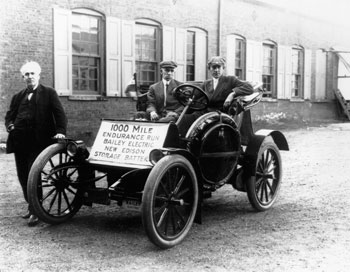
Research suggests students learn more this way, too.
Learning from mistakes is hardly a new teaching or life philosophy. A century ago, after five months and more than 9,000 experiments, famed inventor Thomas Edison still wasn’t able to make a new type of storage battery work, according to a 1910 authorized biography. When a colleague pointed out all that effort had failed to yield any results, Edison retorted: “Results! Why, man, I have gotten a lot of results! I know several thousand things that won’t work.”
That adage is as enduring in the humanities as it is in science. Irish playwright and novelist Samuel Becket, who died in 1989, said: “Ever tried. Ever failed. No matter. Try again. Fail again. Fail better.”
To grow, accept failure
Although it seems axiomatic that we learn and grow through trial and error, few studies have looked specifically at how making mistakes affects a student’s ability to learn. Even so, a teaching approach that embraces this style of learning has been gaining traction in K-12 and university curricula. It’s called inquiry-based learning, which basically means that students uncover knowledge by themselves. It is also sometimes called problem- or discovery-based learning.
At the forefront of the movement to spread inquiry-based learning is Mary Walker, a clinical professor in the natural sciences at the University of Texas at Austin. She also is associate director of the UTeach program there. Since 1997, it has trained college students to teach STEM subjects in high schools using inquiry-based instruction. At its core, this method encourages students to risk making mistakes and to work together in experimenting and solving problems.
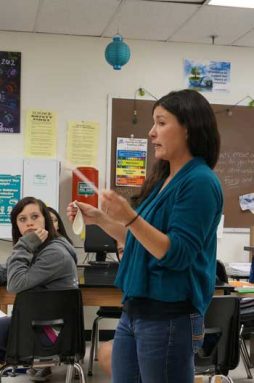
“If you’re engaged in a hard problem, you’re developing an attitude that failure is okay,” says Walker. “Accepting failure helps you learn,” she notes. Moreover, you’re learning by working together.
One lesson plan that UTeach participants learn involves the design and construction of a pinhole camera. Teachers in training must apply concepts from all four STEM disciplines — science, technology, engineering and mathematics. Students use materials such as an old shoebox, oatmeal container and parchment paper. “Despite the apparent simplicity of the materials provided,” Walker notes that “the challenge requires knowledge of light and optics, engineering design processes (such as meeting the customer needs), mathematical modeling and scientific experimentation.”
To date, more than 6,800 math and science majors are enrolled in UTeach secondary STEM teacher-preparation programs at 44 universities in 21 states and the District of Columbia. More than 2,144 graduates have finished the program. Nationally, 97 percent of graduates earn teaching credentials, and 87 percent enter teaching.
So far, 76 percent of UTeach graduates who entered the classroom are still teaching, according to Walker. That’s a higher retention rate, she notes, than national averages derived from sources such as the Schools and Staffing Survey conducted by the National Center for Education Statistics.
Walker anticipates that UTeach programs nationwide will produce close to 10 percent of President Obama’s goal of bringing 100,000 new STEM teachers into secondary schools by 2021.
Don’t assume failing is the same as falling
More data have emerged about student-centered instruction. As Walker suggests, the technique often goes hand-in-hand with inquiry-based learning. Students often teach and mentor one another.
Ellen Granger, who heads the Office of Science Teaching Activities at Florida State University (which has its own UTeach program), published one such study in 2012. It compared how student-centered versus teacher-centered approaches affected fourth- and fifth-grade students’ understanding of space-science concepts. The researchers found that learning outcomes were higher for students who enrolled in science classes that take a student-centered approach. Some of these effects were both significant and persistent. For instance, her team measured a positive influence on scores for tests administered 5.5 months after the original instruction.
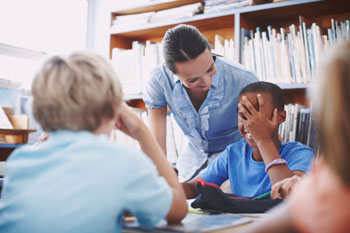
Granger’s subjects were fourth and fifth graders. But taken together with other studies on student learning, she says, the results appear to apply to all students — from kindergarten through college. “It doesn’t matter whether we’re talking about K-5, 9-12 or undergraduates,” she says. “We’re finding the same things… When you must do the sense-making, you learn better.”
By sense-making, she means that the students must actively engage in making sense of a concept or process. Teachers should not just explain how something works. Their students must instead attempt to think critically, guided by a teacher’s careful questioning. An added bonus: Students seem to take pride in figuring things out by themselves.
Biologist and science educator Joseph Levine co-authored Biology, a widely used high school textbook. This educator at the Museum Institute for Teaching Science at the Marine Biological Laboratory, in Woods Hole, Mass., also is trying to put inquiry-based learning into practice. His tactic: Enticing teachers to leave their classrooms for some time out in the field. Along with colleague Barbara Bentley, the two take teachers to the tropical forests of Costa Rica for two weeks of professional training. Their goal: Inspire the instructors to teach more hands-on practices.
“Science is always dynamic and changing,” says Levine. It’s much more complicated than any simple cookbook experiment, he maintains. “Students come up with their own questions and test their hypotheses using data. It creates lots of opportunities for making mistakes.”
A related approach is also seeping into K-12 math education. Common Core is a set of educational standards that 43 states and the District of Columbia have adopted. The set includes eight math practices that teachers are being asked to encourage their students to develop. The first: “Make sense of problems and persevere in solving them.” The idea is to push students to make educated guesses. Then those students should not just to jump to a solution, but instead test different ways to solve their problems.
Making Edison proud
Emily Hogan teaches eighth grade at Westlake Middle School in Broomfield, Colo. She literally puts this practice in motion in her physical science classes. And she does so in ways that would have made Edison proud.
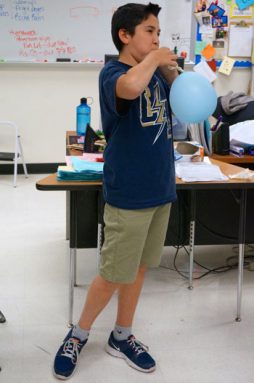
One sunny day last year, her students were busy demonstrating Newton’s three laws of motion. Hogan had given each student the same tool kit. It consisted of a plastic foam dinner plate, a balloon, a small plastic stirrer straw, a sharp pencil and masking tape. The students used their kits to make “rocket-powered” racing cars.
Sergio Montoya finished his beta version and sprang to the front of the classroom, where his fellow students were already testing how far across the floor their cars would race. Sergio blew up his balloon and released his racer. It zoomed forward 1 meter or so, crashed into several other racers and then wobbled to a stop.
The boy picked it up and, like a doctor examining a patient’s broken leg, diagnosed its weakness. “Mine had too much tape on the front, so it would lean to one side,” he said. The balloon also had a leak, Sergio discovered.
Despite these problems, the experiment yielded some real results.
Along the way, Sergio also proudly reeled off, in his own words, what he had learned of Newton’s first law of motion through his direct experience: “When an object stays in motion, unless another force acts upon it, it’ll stay the course,” Sergio said. And a classmate standing behind him was echoing those words.
The next day, Sergio’s newly tweaked car won the class’ race. This was a Yahoo! — not wahoo — moment. And his gleaming grin said it all.







